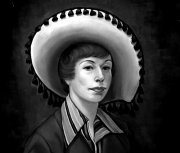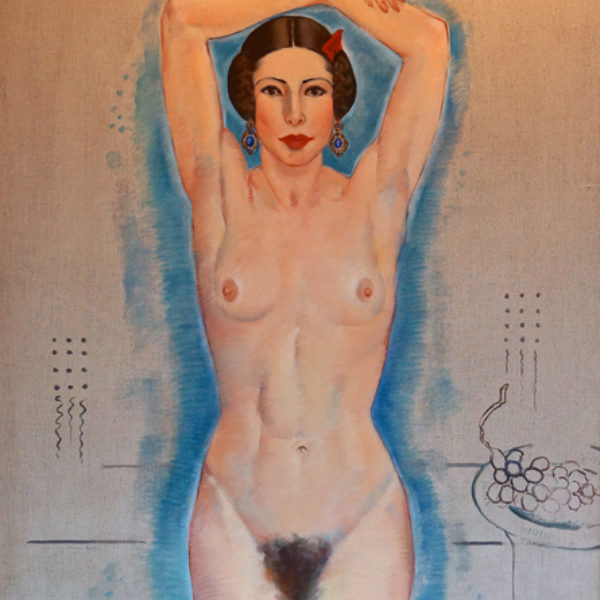
Macena Barton
b. 1901, Union City, MI - d. 1986, Chicago, IL
Macena Barton (Alberta) was born on August 7, 1901, in Union City, Michigan. She came to Chicago in 1921 to attend the School of the Art Institute (SAIC) and graduated in 1924, after which she completed one additional year of post-graduate work. Barton was influenced by Leon Kroll, a SAIC teacher associated with the Ashcan school of urban realists from New York known for infusing their work with personal expression and high-keyed colors. She won the Art Institute of Chicago’s Augustus Peabody Award in 1927 and had a one-person show there the following year.
Barton supported herself by working as proofreader at R. R. Donnelly, and she also worked for the Illinois Works Progress Administration (WPA) Easel program during the Great Depression. She was affiliated with both progressive, modern art groups (Chicago Society of Artists, No-Jury shows) and conservative ones (Association of Chicago Painters and Sculptors, Art Institute of Chicago). Her work reflected this balance, as she skillfully conveyed a likeness, displaying her technical mastery of the craft, and at the same time produced work that conveyed a modern and unique vision. Her work was included at the Century of Progress Exhibition in 1933 and 1934 as well as in the Art Institute’s Half Century of American Art Exhibit in 1933. Barton lived for fifty years in the Tree Studio Building, at 4 East Ohio Street, and had a long career, painting until she was eighty-one.
In a 1931 No-Jury show at the Knoedler Galleries, Barton exhibited a “stunning Negress model” in a painting called Mitzi. She created Mitzi in response to The Courtezan Olympia, a book in which the influential Chicago art critic C. J. Bulliet argued that women could not paint nudes. She met the well-known art critic that same year, and began a very public, twenty-year-long relationship with him, while he was married. Bulliet became a stalwart promoter of her career, including her in his Art Masterpieces of 1933 and 1934. Bulliet wrote that her “aggressive portraits tell truths rather than flatter.” And he continued: “She can lay claim to being the first American woman to do a nude self-portrait. The portrait is not coy, but a brazen full standing figure with her arms behind her head and her gave fully engaging the viewer.” Barton gave this notable painting—now in the Friedman collection—to Bulliet. She continued to paint self-portraits and sensual nudes well into her seventies.
In 1953, Barton married Francis Robert McNeilan. She remained and worked in Chicago for the rest of her life, and died in 1986.
Lisa Meyerowitz
References
Barton, Macena. Pamphlet file P-00037. Ryerson Library. Art Institute of Chicago. [13 items]
Macena Barton papers, 1839–1985, 1914–1985. Smithsonian Archives of American Art, http://www.aaa.si.edu/collections/macena-barton-papers-9526
.Bulliet, C. J. “Artists of Chicago, Past and Present, no. 9: Macena Barton.” Chicago Daily News. May 11, 1935.
Heise, Kenan. “Artist Macena Barton: Painted The Famous” [obituary], Chicago Tribune, June 04, 1986.
Weininger, Susan. “Macena Barton.” In Elizabeth Kennedy, ed. Chicago Modern, 1893–1945: Pursuit of the New, 89. Exh. cat. Chicago: Terra Foundation for the Arts, 2004.
Yochim, Louise Dunn. Role and Impact: The Chicago Society of Artists, 89. Chicago: Chicago Society of Artists, 1979.
